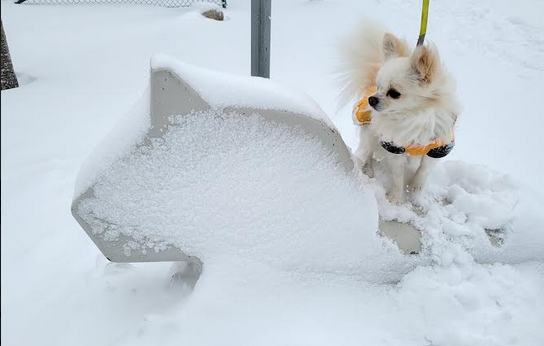Happy Monday, ONLers!
This week’s post is meant to tie in with Topic 4, where we discussed plans for improving online and blended learning. Unfortunately (or fortunately), it’s been a hot minute since I last taught online. Courses within my department have been entirely in-person for the last year, so I haven’t had to think much about getting Zoom rooms set up or integrating interactive activities into my recorded seminars.
That being said, I’ve enjoyed going through the suggested literature for this topic and reflecting on how I could improve upon the online-only iterations of my taught courses. Of the models presented for course design, my favourite was the ICEBERG model for student retention developed by van Ameijde, Weller, and Cross (1), as it caused me to think more critically about how my actions might have lowered student motivation in the past. I definitely need improvement on incorporating the “I” and “R” of the model into my teaching, meaning that I need to make my online courses both more integrated and more reflective.
When it comes to ensuring online coursework is “integrated”, I’ll admit that I tend to put information where it’s easiest for me to write rather than where it’s easiest for students to access. This results in an absolute mess where lecture slides are on our LMS, code examples are on Google Sites, and feedback on assignments is often sent back by email. In the future, I need to take time to sit down and really learn the capabilities of our LMS so that I can give students access to everything in one place – thereby decreasing their cognitive overhead and perceived workload (1).
Giving students more opportunities/time to reflect on their learning will be the real challenge for me, especially if they don’t have the option to meet with me or classmates in person. I really like having in-person review days before exams, where students can come in, eat snacks, and ask me whatever they want in an informal setting, but this is a bit harder to do over a video call. Online teaching also means no lab or field experiences for my students, which does them a bit of a disservice when they want to figure out how theory meets practice. The best I can do, I think, is to provide more concrete examples of literature where conservation theory is used for actual conservation. I should also be sure to grade and return assignments in a timely fashion. This is something find I’m quite garbage at, but prompt feedback is key for making sure students are on track and feel listened to. If you also struggle with getting feedback out quickly, I suggest looking at the nice suggestions on page 145&146 in (2) for ways to change things up.
Do you have any favourite ways of encouraging student reflection when teaching online? Do online check-in quizzes work best for you, or are there better ways of helping students see that they are learning things and that those things are valuable? Let me know in the comments!
Until next post,
Hanna
Works cited:
- Weller, M., van Ameijde, J. & Cross, S. (2018). Learning Design for Student Retention. Journal of Perspectives in Applied Academic Practice, 6(2)
- Fiock, H. (2020). Designing a Community of Inquiry in Online Courses. The International Review of Research in Open and Distributed Learning, 21(1), 135-153.

Ana Maria Vargas Falla
Hi Hanna,
I have used in the past the check in quizes and I find them very useful. I think with online is even better, becasue we don’t need students memorising things, but at least being able to identify few key concepts or in my case the key differences between a qualitative vs a quantitative question. So in general I think that I am optimistic about using check in quizes more. But they could be seen as old school…maybe online quizes in groups?
Larissa Mickwitz
Hi Hanna,
I really do recognize your thinking about motivation and how students’ reflections can be elaborated. I have just finished a project together with two colleagues about sustainable learning in teacher education (UVK1) here at Stockholm university. One of the approaches was to make students reflect between by answering a few questions after each course:
1. What questions did this module raise that you can take with you to internship at school?
2. What do you take away from this part of the course that may be relevant to your teacher education as a whole?
3. What connection can you see between this module and previous modules in UVK 1?
The reflections were not assessed but the students worked with them together at the last course after they had had their internship period. We could see that reflecting could be a way to increase awareness of ones own learning process. The reflections also shaped their awareness of the connection between the sub-courses. Additionally, their own progression during the whole course period became more visible. But making such an activity fruitful requires well-thought-out work and planned time for the students to reflect.
/Larissa
Kreeson Govindsamy
I like the concept of turning situations like these into larger format games where you can use the knowledge quiz aspect mixed in with their experiments for a tournament style scenario where each team is randomized and the winning team gets a day off and a free lunch kind of vibe.
and then you can just do an article on the University website that will serve as a sort of reflection on how that leg of the tournament went and how they found the game and might create a bit of a unique fun competition that builds groups, promotes Asynchronous learning.